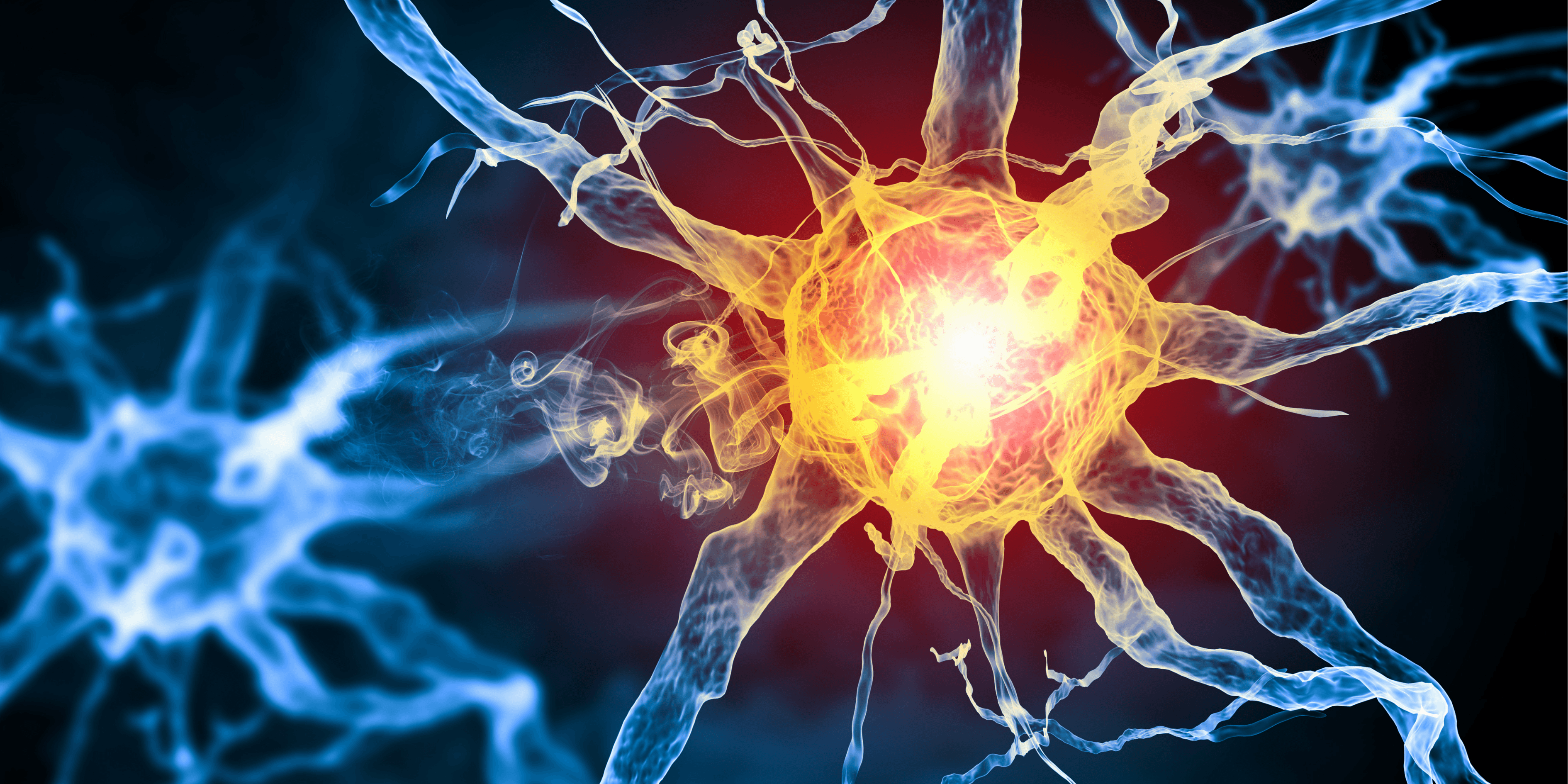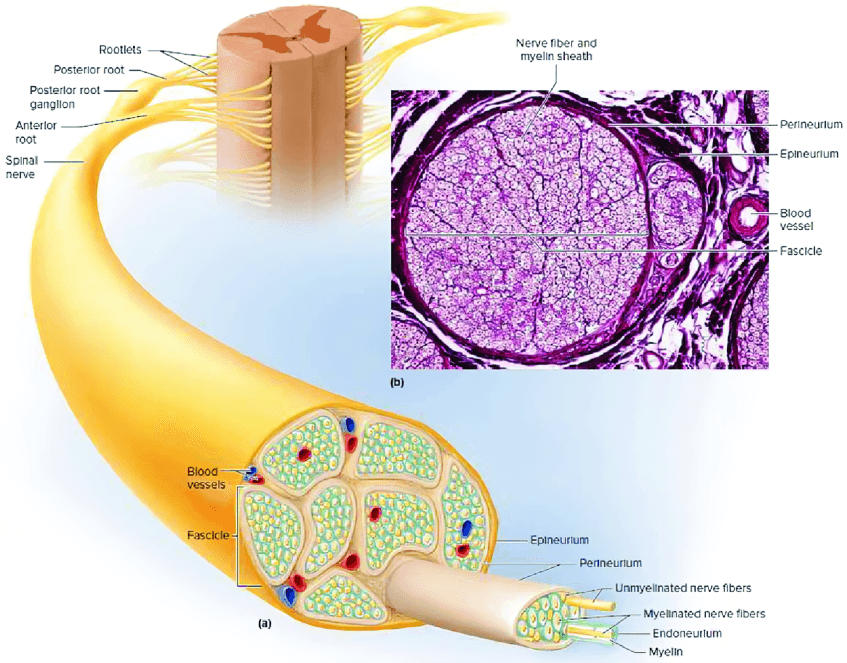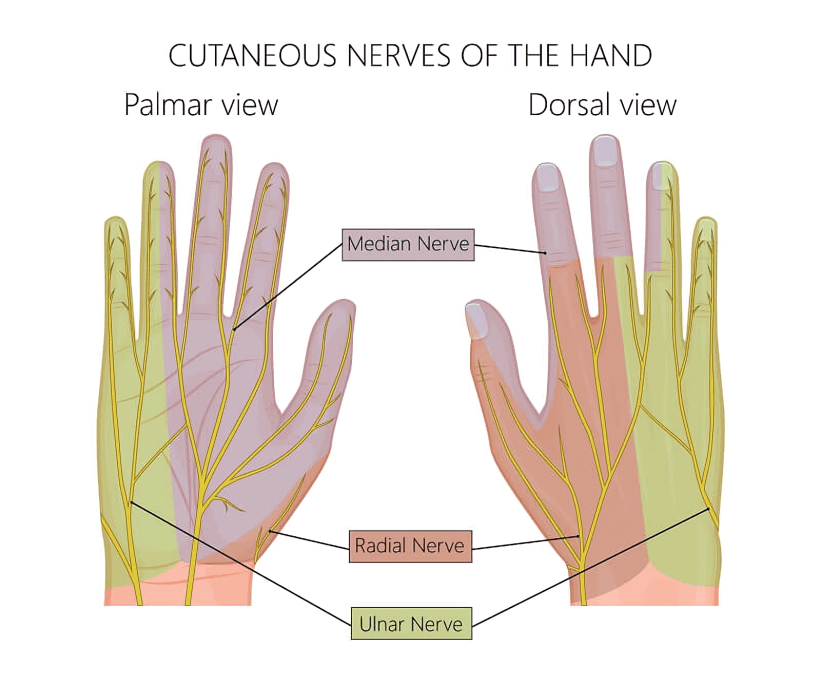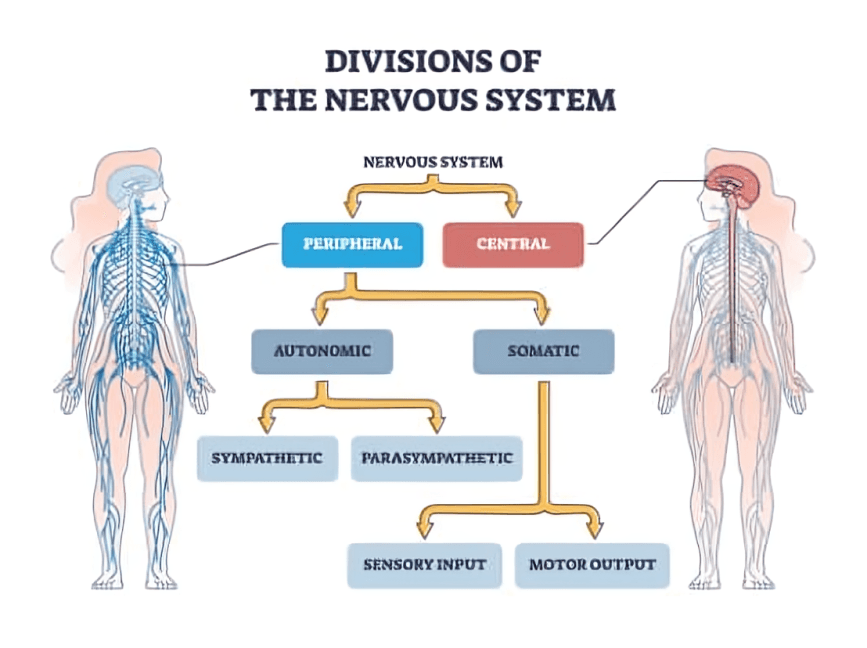
“
The human nervous system is a vast communication network where nerve types play essential roles. The types of nerves: sensory, motor, and mixed enable us to feel, move, and respond efficiently to our surroundings. Sensory nerves carry incoming signals from the body to the brain, motor nerves transmit commands from the brain to muscles, and mixed nerves handle both directions. 1
1
”
Sensory nerves carry messages from receptors like skin, eyes, and ears to the brain, allowing us to experience sensations such as touch, pain, temperature, pressure, sound, and light. 1
Motor nerves transmit signals from the brain or spinal cord to muscles or glands, enabling controlled body movement, gland secretion, and even involuntary reflexes necessary for survival. 2

Mixed nerves include both sensory and motor fibers, meaning they can send signals in both directions—receiving sensory information and delivering motor commands through the same nerve structure.
The sciatic nerve is a classic example of a mixed nerve, responsible for both feeling and movement in the lower limbs, running from the lower back through the hips and down the legs. 3
Damage to motor nerves can result in muscle weakness or paralysis, while injury to sensory nerves often causes numbness, tingling, or chronic pain, depending on the affected region. 4
Reflex actions involve sensory and motor nerves working together in milliseconds—sensory nerves detect the trigger, and motor nerves rapidly send signals to react without waiting for brain input. 5
The spinal nerves—31 pairs in total—are mostly mixed nerves, combining both sensory and motor fibers to serve distinct body regions through spinal cord connections. 6
Sensory nerves contain afferent fibers, meaning they carry impulses toward the central nervous system, collecting input from the body and relaying it to the brain for interpretation. 7
Motor nerves contain efferent fibers, meaning they send signals away from the central nervous system to initiate actions, like moving limbs, blinking, or digesting food. 8

The ulnar nerve, a mixed nerve, is responsible for both movement and sensation in the forearm and hand, especially affecting the ring and little fingers when you hit your "funny bone."
Motor neurons are categorized further into upper and lower motor neurons; damage to each produces different symptoms, such as spasticity or muscle wasting, affecting voluntary control. 9
Peripheral nerves, which include sensory, motor, and mixed types, form the peripheral nervous system and link the brain and spinal cord with the limbs and organs across the body. 10
Mixed nerves offer efficient communication between the brain and muscles or glands by reducing the need for separate pathways, combining dual functions within a single nerve structure. 11
In conditions like multiple sclerosis, the protective coating around sensory and motor nerves (called myelin) gets damaged, leading to disrupted signal transmission and a mix of motor and sensory symptoms. 12
Cranial nerves include both sensory-only types (like the olfactory and optic nerves) and mixed nerves (like the facial nerve), supporting head and neck sensation, movement, and gland function. 13

Somatic motor nerves control voluntary muscle movements such as walking or speaking, while autonomic motor nerves manage involuntary actions like heartbeat, digestion, and pupil dilation.
Advanced surgical techniques now enable partial nerve grafting, allowing damaged mixed or motor nerves to be repaired by transplanting sections of healthy nerves from other body parts. 14
Neuropathy refers to damage to sensory, motor, or mixed nerves. Symptoms vary depending on the type affected but may include burning, numbness, coordination loss, and muscle control problems. 15
Some therapeutic devices, like transcutaneous electrical nerve stimulation (TENS), target sensory nerves to relieve pain by confusing or blocking pain signals traveling to the spinal cord and brain. 16
Sir Charles Bell, a Scottish anatomist, showed that spinal nerve roots have distinct roles—dorsal for sensation and ventral for movement—shaping our modern understanding of nerve function.17


